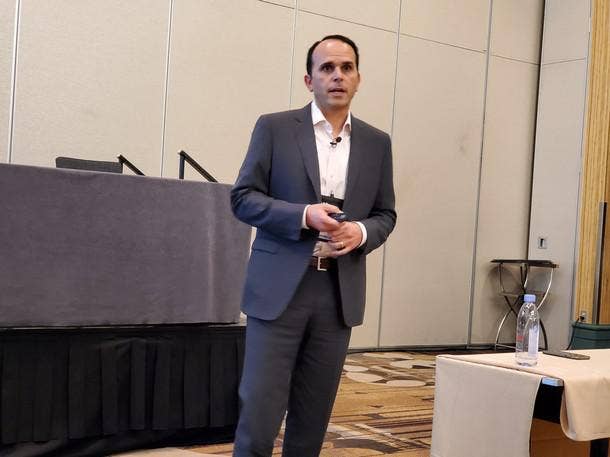NPD Group: Subscriptions Are Rising Fast In Security, Storage
A rapidly increasing number of channel deals in security, as well as in storage and hyperconverged infrastructure, are being sold as subscriptions, according to the research firm.

While subscription models are key to the sales of many business applications and cloud platforms, the move to subscriptions is accelerating in areas including security and storage software, an executive from research firm The NPD Group said Wednesday.
"It's a growing trend that I expect will continue to happen over the coming years," said John DeVito, executive director for product development at The NPD Group. "It seems to be the way businesses want to be operated these days--they want that subscription model in place."
[Related: The 5 Best-Selling IT Operations And Networking Vendors Of Q2 2019]
DeVito spoke Wednesday at the NexGen 2019 Conference and Expo in Anaheim, Calif., an event hosted by The Channel Company, which publishes CRN.
The NPD Group, which tracks sales from North American IT distributors and resellers, has found that security subscriptions accounted for 34 percent of all security deals sold through the channel in the second quarter of this year. That represented a sizable increase, climbing from 26 percent during the third quarter of 2018.
However, "it's not just in the security space--it's kind of across the board that we're seeing subscription licensing increasing," DeVito said. "If I look across all software flowing through the channel, subscriptions are up 20 percent year-over-year."
Storage software that runs hardware arrays and hyper-converged infrastructure are also increasingly being sold as subscriptions, he said. Storage and hyper-converged subscriptions rose 51 percent year-over-year as of the end of August, according to DeVito.
Additionally, database and app development software subscriptions grew 13 percent year-over-year, he said.
Jeremy MacBean, director of marketing and communications for Brampton, Ontario-based IT Weapons, said he is in fact seeing interest in subscription models across the board.
"What's interesting is there's a feedback loop between the subscription model being really advantageous for a service provider. Recurring revenue is mega-attractive," MacBean said. “So what's nice to see is that now the client base is starting to see the value in operationalizing expenses for lots of things.”
For traditional back-end infrastructure, a subscription model has made sense for many years, he noted.
"It's been fairly straightforward -- don't own stuff, go to a cloud provider and a service provider. And then you can have stable costs, you don't have to worry about cost spikes for capital expense," MacBean said. "But now, the willingness of the customer to want to adopt that model for other things is virtuous. It's a really nice example of a win-win for solution providers and MSPs in particular. Because that's making our job easier to articulate the value of those things in selling to new customers."
DeVito also outlined the year-over-year results by segment, with hardware seeing the lowest growth at 2 percent. Security grew 16 percent in terms of channel sales year-over-year, while database and app development software grew 10 percent. Cloud services grew the fastest with 33 percent growth year-over-year through the channel, he said.
Among the major cloud platforms, Oracle saw the fastest revenue acceleration through the channel with 107-percent growth year-over-year, while IBM followed with 96 percent growth. Microsoft Azure grew 69 percent and Amazon Web Services rose 42 percent. Figures for Google Cloud were not provided.
While hardware has seen minimal growth over the past year, some product segments have continued to see increasing demand, DeVito said. The top five categories for hardware product growth through the channel were all-flash arrays, solid state drives, hyper-converged systems, docking stations and tablets, according to The NPD Group findings.
The biggest declines in hardware came in hybrid and hard-disk storage arrays, hard disk drives, network security, inkjet cartridges and servers, DeVito reported.